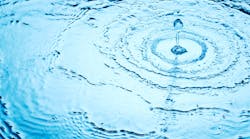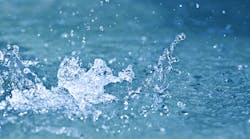The Water Environment Federation's (WEF) Board of Trustees has approved a revised position statement that calls for innovative and beneficial uses of biosolids. The statement expands on the Federation's existing support of federally regulated land application by encouraging a comprehensive approach to wastewater treatment and solids management that ensures the recycling and recovery of all associated resources including water, nutrients, organic matter and energy.
"As a natural byproduct of wastewater treatment, WEF recognizes that biosolids is a renewable resource that is too valuable to waste given our growing needs for renewable energy and sustainability," said WEF Executive Director Jeff Eger. "The adoption of this revised statement reflects WEF's support of initiatives to ensure an expanded view of wastewater and solids management as well as our commitment to pursue innovation in water quality."
WEF believes that a cultural move toward sustainability has the potential to shift policy-maker and public perception of biosolids from a waste to a community resource that can help achieve sustainability goals. This shift is creating unprecedented opportunities for the wastewater and biosolids community to position biosolids as a valuable commodity.
Also recognizing that biosolids recycling remains a local decision, WEF encourages the use of whatever associated practice—land application, composting, energy generation, product development, landfilling, incineration, or other uses—is best suited to a community's economic and technological capabilities.
Partnership Tackles VOC, Radon Removal
Membrana-Charlotte, a division of Celgard, LLC, has entered into a limited exclusive agreement with Layne Christensen Company for Radon and VOC removal for municipal water applications in the continental United States.
Membrana and Layne have been working together since 2010 to evaluate the use of Membrana's Liqui-Cel® Membrane Contactors for Radon and VOC removal in the municipal market.
The contactors offer a modular degassing option that can be put in virtually any area. They are rapidly replacing older deaeration technologies as the product of choice in many industrial and commercial applications.
The contactors use thousands of Celgard® microporous hollow fibers that are used around the world for adding or removing oxygen, carbon dioxide, nitrogen and other gases to or from different liquids. The Extra-Flow design incorporates a baffle in the middle of the contactor, which directs the liquid radially across the array. A strip gas or vacuum, either separately or in combination, is applied on the lumen side of the hollow fibers. Because of its hydrophobic nature, the membrane acts as an inert support to allow direct contact between a gas and liquid phase without dispersion. The dissolved gas in the liquid travels through the pore by applying a higher pressure to the liquid stream relative to the gas stream.
More WaterWorld Archives Issue Articles


